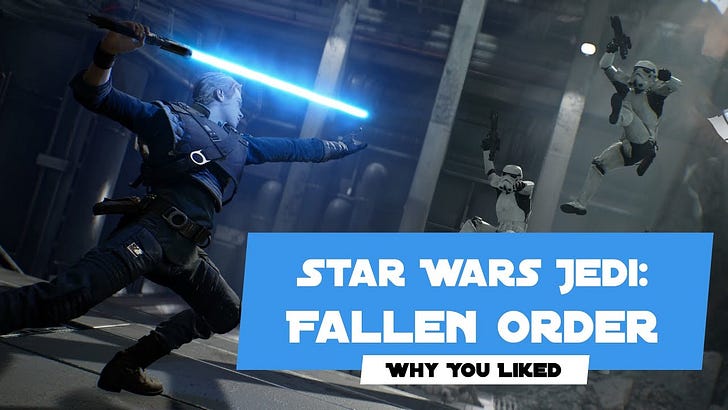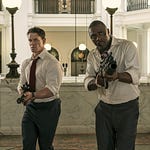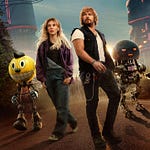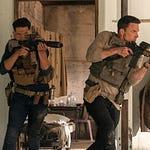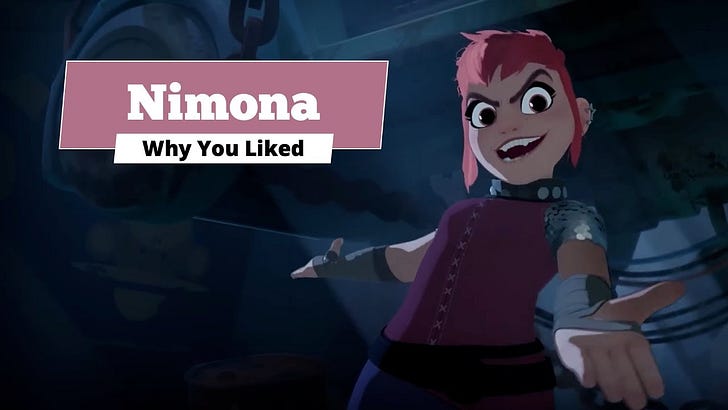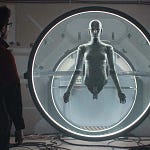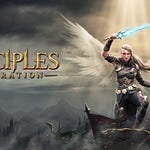If we’d hopped back to 2019 and I’d said there was still hope for a galaxy far, far away, you’d have had me committed. The last major Star Wars releases were 2017’s The Last Jedi and 2018’s Solo, and the reception on those was… mixed.
Well, Stig, mission accomplished. I don’t understand how the team kept going during that trying time. Perhaps you had a secret Mandalorian screening.
But we’re not here to talk about The Mandalorian. We’re here to talk about why Star Wars Jedi: Fallen Order delivered the grit that reminded us lightsabers still belong in our fan fiction.
This Isn’t Your Parents’ Star Wars
When I fired up Fallen Order on release day, that opening scene—where the ruins of a Star Destroyer are ferried overhead while you look up from the muck below—had me hooked. We had a story here where the Empire had won so comprehensively they were junking their own weapons of mass destruction, and you were so far beneath them that they couldn’t see you through the grime.
The game doesn’t open with Force powers or flashy lightsaber battles. It’s just two friends trying to make an honest living, so down on their luck they’d forgotten what soap smelled like. The game uses this personal moment of camaraderie with your friend, Prauf, to introduce you—as Cal—to the controls. It’s not the hold-L2-to-climb that sticks with you, though. We get to see poverty in the Empire. There’s dirt and grime, so unfamiliar to Star Wars settings outside of the excellent Rogue One. Playing the opening makes you feel like your fingernails will never be clean again.
It also establishes this story as a personal one. The galaxy has a lived-in, hand-me-down feel—or perhaps it’s just rented from Blockbuster for a spell. There’s not a single Skywalker to be seen, and in their absence we learn that people hate Jedi.
They’re traitors, after all.
Built With Love (and Maybe a Lightsaber to the Clavicle)
In Star Wars Jedi: Fallen Order, you play Cal Kestis, a Jedi Padawan who’s arrived on Planet Shitsville post-Order 66. The game looks like a third-person character-action game like Horizon or Uncharted, but it plays far more like the bioengineered lovechild of Dark Souls, Metroid, and Sekiro. During Cal’s 15-20-hour journey through a spoiler-related number of planets, your nominal quest is to find a holocron that contains the locations of enough Force-sensitives to rebuild the Jedi Order.
It is, of course, not that easy. And it’s especially not easy when the previous two mega Star War releases were immolated by parts of the fandom. Respawn spent over five years making this game, and during that time they must have quailed as the property they held in such reverence was burned in effigy to appease shareholder value.
However: as a wise man once said, fear is the path to the dark side. Fear leads to anger. Anger leads to hate. Hate leads to suffering. Respawn aren’t big fans of making their players suffer. Fallen Order isn’t a cash-grab tie-in; it’s so divorced from the movies it may as well be set in an alternative galaxy. It’s rare to play a game that oozes so much creative passion. It’s easy to wave a hand and say, “Oh, the actors did it.” And while Cameron Monaghan, Debra Wilson, Tina Ivlev, Daniel Roebuck, and Elizabeth Grullon gave us heroes and villains that made me want to live in the Star Wars universe again, it wasn’t just the performance capture doing all the work.
See, while their performances made me yearn for them to reprise those roles on the silver screen, this game is a relay baton passed down by a winning team, whether they’re a writer, developer, level designer, artist, actor, musician, or even that pesky director, Stig Asmussen. These people believed in the power of unity—that things can be better if we work together—and the finished product has that fresh-baked-bread smell of a group of extraordinary talents whose dream job was simply to make the thing they made.
Gameplay Gumbo: A Combat Melting Pot That Actually Tastes Good
If you walked into your average dev studio and said, “Okay, team, we’re going to make a game that combines Dad-of-War-style melee, Sekiro’s parry timing, souls-like checkpointing, and Metroidvania level design, and we’ve only got five years,” you’d expect a revolt.
It’s the kind of thing that should be a total mess, a mosh pit of conflicting ideals and directives sure to confuse the player. Each one of those ideals takes a standard dev studio their entire multi-year development cycle to iterate to perfection. Fallen Order should have been an over-salted mess, but it’s not: it’s a magic stew.
There’s a real flow state in combat—the beautiful transition between offence and defence, each moment of using the lightsaber a dance with destiny. Fights have a highly strategic feel as the game uses its wide variety of hench-persons to great effect. Just when you feel mastery of one scenario, a new Dejarik holochess opponent enters the chat.
While all this is happening, Gordy Haab is on the horn to heaven, dropping dope cinematic gravitas into your ears with his ripping music. He’s doing John Williams without aping him; it’s a rare feat, and this is one game where you’ll want to be sure to leave the music on for, whether you’re exploring or murdering.
The game doesn’t shy away from what a lightsaber does (to metal or meat). Finishing moves are visceral, and I’m sure I left an easy thousand severed limbs on my journey across the galaxy. Wielding a lightsaber in this game is sublime; mastery is hard-earned, but just like a real Jedi, you feel as if you could take Darth Vader himself after you defeat the boss at the end.
This is because Fallen Order has The Best Lightsaber in Gaming™. Combat feels like wielding something powerful. It’s not just that the saber is more than a glowy baseball bat. The interpolation of Force powers in the combat gives an S-tier murder experience. And customisation lets you… connect with your saber emotionally. You’ll spend more time tweaking your hilt than your taxes.
Hard, But Not Hostile
“Not easy,” doesn’t mean, “Not worth it.” A few of you might have glazed over when I mentioned Fallen Order had soulslike elements. Does that mean it’s too difficult? Sekiro is widely known for keeping controller manufacturers in clover from all the frustration-destroyed units players break while playing. How does that translate to Fallen Order?
While difficulty is subjective, we can use proxy measures rather than the Force to try working out if this is too hard for your average bear. Let’s start with games lauded for their accessibility, like Horizon Forbidden West. About 41% of players have beaten the big bad in this one:
Elden Ring, arguably a much more difficult game than Horizon, nets us about a 24% completion rate:
It’s important to spend a little time on the differences between the Lands Between and Star Wars. While FromSoftware titles have a loyal fanbase, perhaps attracting the kind of player who likes putting their balls in a belt sander, Star Wars is the most valuable media property on Earth. Its reach dwarfs anything videogames have to offer, and there is a large section of that fanbase who’ll buy anything with Star Wars on the tin.
Let’s briefly look at Knights of the Old Republic II (since the first KOTOR doesn’t have Steam achievements). Only 21% of players rolled credits with a Light or Dark Side ending. This suggests that while the fanbase is loyal, they aren’t necessarily completists.
Where does that leave us with Fallen Order? KOTOR II is a long-ish game, but so is Horizon; length isn’t always an arbiter of completion. Fallen Order is difficult, but so is Elden Ring. My hunch was that if we used completion as a proxy for difficulty, we’d find people rolling credits on Fallen Order somewhere between KOTOR II and Elden Ring. What do the stats actually tell us? Well, as it turns out, about 33% of people rolled credits on Fallen Order, exceeding the sickos who completed Elden Ring and leaving us not too far short of Horizon.
This says the difficulty is finely tuned; it challenges, but doesn’t repel. You’ll die for sure. You’ll swear. But you’ll also perfect parry the head off a psycho K2SO unit and feel more badass than Mace Windu.
It’s Not All Smooth Sailing
The real Dark Side of Fallen Order is misjudged wall-runs and ledge grabs.
The number of times I slid to my death because Cal decided friction was optional was beyond count. I didn’t get rage in combat; the times I got near to twisting a controller in half was failing a wall run that should have worked. Watching your boy Cal just … not, when he should have clearly grabbed, ran, or jumped felt like cheap deaths. When the controls or environment let you down, the deaths teach you nothing but how powerful the Dark Side is.
The good news is that Respawn clearly listened. This kind of jank is largely fixed in Fallen Order’s sequel, Survivor. But, yeah, holy shit: it’s not facing a room of Imperial security droids that embeds controllers in walls. It’s the failure to grab a rope that’s right fucking there.
Invisible but Brilliant
There are some other nice touches Fallen Order brings to the table. The UI is nearly invisible, and your moment-to-moment gameplay is free of HUD icons telling you where to go. While your handy buddy droid BD-1 has a map, this is less about “go here” and more about “this is what you’ve done.” It’s a great tool for people who want to 100% the map, but it won’t show you how to get from the ass of Planet Night Sister back to your ship. That’s all you.
The game is amazing at teaching through design, not tutorials. You’re not being led by the nose, here. The game world leans in and whispers to you. The level design itself is your guide. I can’t think of an instance where I didn’t know where to go or what to do. I can think of many instances where the level layout coaxed me into a path less travelled. Coupled with BD-1, the layout is your co-pilot for navigation.
Before we move on, can we just talk about BD-1? That droid’s got more emotional range than some of the movies. And he’s a map!
A Cure for Fatigue
Fallen Order released post-Last Jedi and post-Solo. Expectations were low. It made the triumph of this game all the sweeter. What’s not to like about a team of amazing creatives bringing hope back to the galaxy?
We thought we were getting a side dish, but Fallen Order delivers us a full main course, complete with extra lore sauce. There are more Jedi in the galaxy than those carrying the name of Skywalker or Palpatine. Cal Kestis’s story is the real joy in this game.
It returns us to the way we felt when seeing the movies the first time. The found family, the doing what’s right even though it’s hard, and the standing up to tyranny in all its forms? It’s all here. This is a good story, but it’s also a great Star Wars story. There are friends and enemies, sidekicks and comedy acts, droids and aliens, and weird planets and wonderful lifeforms. It’s all here, dredging into the rich lore that Star Wars should offer us on every outing, but somehow forgot how to.
It’s because the core emotional arc isn’t, “Become a Jedi.” It’s, “Find your people.” Cere, Greez, BD-1, and Merrin are all a ragtag crew you grow to love. They’ll challenge you on your bullshit. They’ll oversalt the food when it’s their turn to cook. They’ll bitch and moan about the mission… but through it all, they’ll still do the mission, because it needs doing.
There’s no one else.
I wonder what life would be like if we lived in a time of Imperial tyranny. When Nazis were openly on the rise, and it felt easier to be silent than seen. Replaying Fallen Order for Star Wars Day is an important reminder that not all villains are fictional. Not all struggles are in fantasy worlds. Sometimes, the biggest fights are right in front of us. But if you find your people—and if you understand there’s no one but you who will make a difference—then the world gets better.
Fallen Order reminds us what that feels like.
The Jedi We Deserved
A thing that Cameron Monaghan absolutely nailed in his rendition of Cal Kestis was the difficulty of being simply human. Cal’s not chosen. Hell, he’s on the run, and he feels the guilt from not being good enough back when it mattered.
He’s like the rest of us. Imperfect, but doing the best he can. His trauma, guilt, and growth give us a better hero than most films manage.
Cal’s also the hero Star Wars needed—one that reminds us that heroism is often more about sacrifice than victory. About putting other people first, even when you’re tired. And relying on your friend to not rat you out even when you fear that’s exactly what will happen.
There’s a deep lesson in here: that being what the world needs us to be could be just as simple as doing the right thing. To quote from another Disney property:
You are lost, hope is gone
But you must go on
And do the next right thing.
Cal is always trying to do the next right thing. It doesn’t always work out, and we love him for how he manages the fallout.
A Spark of Something More
The game ends cleanly, without a huge cliffhanger. We stuck the landing on the recover-the-holocron quest. It’s rare in modern games to feel like the first game wasn’t just a booster rocket for the sequel to make it to orbit, but that’s what we got!
That’s not to say there’s not more story to tell. There’s a sequel, Star Wars Jedi: Survivor, which tells the what-next of this story. But if you don’t play it, you’re not feeling ditched at the altar. It’s more that they left a galaxy of potential open.
They didn’t tease the future. They earned their right to tell it.
The Hope We Forgot We Needed
Star Wars Jedi: Fallen Order is the game that cribs from Rogue One and A New Hope in emotional tone. It’s a game that shows heroism through resilience, not destiny. And it allows us to believe that people can make a difference, no matter how small their beginnings.
It’s a game that reminded me of something the Jedi Council forgot, in all their lofty ideals. The Force isn’t about being more than other people. It’s not about throwing lightning around, despite how cool that looks. And it’s not about lifting rocks.
It’s about lifting people.
That’s why you liked Star Wars Jedi: Fallen Order. Because it made you believe again in what we’re all capable of.
What did you think about Star Wars Jedi: Fallen Order? Let me know in the comments below. If this trip to a galaxy far, far away left you feeling better for it, feel free to Force Push the Like Button, and maybe take a risk on the Dark Side and Subscribe.
Thanks for reading/listening/watching!


